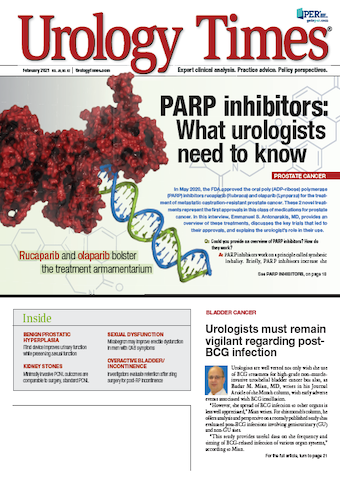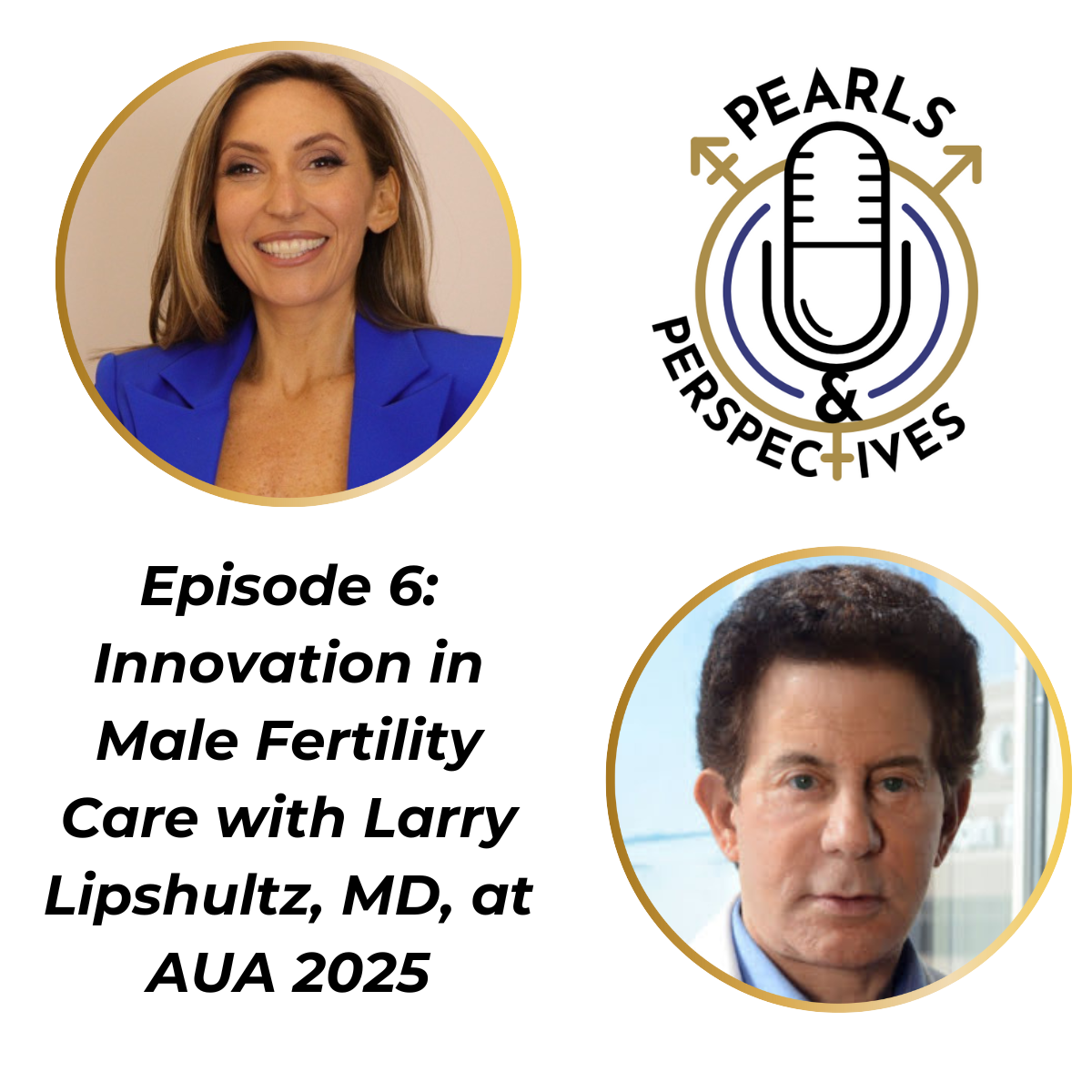Publication
Article
Urology Times Journal
Mirabegron may improve erectile dysfunction in men with overactive bladder symptoms
Author(s):
The findings support continued investigation of the safety and efficacy of mirabegron in men with OAB and concurrent ED, says study author Arthur L. Burnett, II, MD, MBA.
β3 agonist treatment of overactive bladder (OAB) may also improve erectile dysfunction (ED) in men who have symptoms of both disorders, according to study results reported at the 2020 Sexual Medicine Society of North America (SMSNA) 21st Annual Fall Scientific Meeting.1
Five of 13 men with OAB and mild to moderate ED experienced clinically relevant increases in erectile function after 12 weeks of treatment with mirabegron (Myrbetriq), a β3-adrenoceptor agonist approved by the FDA for treatment of OAB. As expected, symptoms of OAB also improved, with no serious adverse events noted over 12 weeks, said Serkan Karakus, MD, a clinical fellow with the James Buchanan Brady Urological Institute at Johns Hopkins School of Medicine in Baltimore, Maryland.
“This is a single-arm, observational study and small study group, but we found some promising results,” Karakus said in an interview. “So I think we could move forward to larger, randomized studies.”
These preliminary findings at least suggest that mirabegron could be an alternative for ED treatment when phosphodiesterase type 5 (PDE5) inhibitor treatment fails or is contraindicated, according to coinvestigator Arthur L. Burnett II, MD, MBA, a professor of urology at Johns Hopkins School of Medicine.
“The question is whether have we solved ED treatment entirely with PDE5 inhibitors, and the answer is no,” Burnett said in an interview. “So why not explore alternative mechanisms with a thought that this new therapy, which may not necessarily be addressing a predominant mechanism of penile erection, could still be a complementary or additive therapy to consider.”
In his SMSNA presentation, Karakus described OAB and ED as disorders of the lower genitourinary tract that share several pathophysiologic mechanisms, including dysregulation of the nitric oxide-cyclic guanosine monophosphate pathway, increased sympathetic tone, upregulation of Rho kinase expression, and chronic hypoxia.
The β3 adrenoceptor has been found in human corpus cavernosum, he added, noting that mirabegron could act simultaneously in the bladder and corpus cavernosum via β3-adrenoceptor activation.
The nonrandomized, single-arm study by Karakus and colleagues included 20 men with OAB and mild to moderate ED as defined by International Index of Erectile Function (IIEF) Erectile Function domain scores between 11 and 25 or Sexual Health Inventory for Men (SHIM) scores between 8 and 21. Patients received mirabegron 25 mg daily for 2 weeks and then 50 mg daily for the next 10 weeks.
Seven patients were lost to follow-up, and 13 remained in the study for the full 12 weeks, according to investigators. Treatment with mirabegron was associated with significant improvements in mean SHIM scores through week 4 and week 8 (P=.0003). The SHIM score decreased slightly by week 12, so no significant improvement was noted at that time, according to Karakus.
However, looking at individual SHIM scores, 5 of 13 patients experienced a 4-point increase at 12 weeks, and there were no clinically relevant decreases in SHIM or IIEF scores for any patient.
IIEF scores trended toward significant improvement at week 4 and week 8 evaluations (P=0.08), and no changes were seen in orgasmic function or sexual desire.
As anticipated, treatment with mirabegron significantly improved symptoms of OAB and OAB-related quality of life, according to the investigators. In addition, no serious adverse events were observed; transient nonserious adverse events included headache, constipation, back or leg pain, flu-like symptoms, rash, and elevated blood pressure, Karakus said.
According to Burnett, senior author of the study, these findings support continued investigation of the safety and efficacy of mirabegron in men with OAB and concurrent ED.
“This is not a definitive study, it’s not a randomized controlled trial, and the numbers aren’t there that need to be done,” Burnett said. “But I think it does provide some interesting initial observations to test the hypothesis and possibly will be a foundation to move forward with something more rigorous to come.”
Disclosure: Astellas Pharma US, Inc provided funding for the study.
Reference
1. Karakus S, Musicki B, Burnett AL. Mirabegron for erectile dysfunction. Abstract presented at: 2020 Sexual Medicine Society of North America 21st Annual Fall Scientific Meeting; November 9-15, 2020; virtual.

































